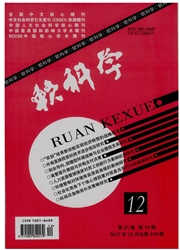

 中文摘要:
中文摘要:
在传统的EKC模型中引入腐败因素,建立了一个包含腐败、经济增长与二氧化碳排放的扩展EKC模型,利用1998~2014年中国30个省级地区的面板数据,基于静态与动态面板模型实证研究腐败对中国二氧化碳排放的影响。研究发现:腐败显著地提高了中国的碳排放量,腐败程度与碳排放存在正相关关系;环境库兹涅茨曲线假说在中国成立,中国的碳排放与经济增长之间存在倒U型曲线;外资在中国存在“碳光环”效应,而贸易开放会增加碳排放量,存在“碳泄露”效应,产业结构升级对减少碳排放有显著的积极作用,而环境规制对碳排放无显著影响。
 英文摘要:
英文摘要:
In this paper, corruption is introduced into the EKC model to establish an extended EKC model including corruption, economic growth and carbon dioxide emissions. Using the panel data of 30 provinces from 1998 to 2014, this paper studies the impacts of corruption on carbon dioxide emissions in China based on the static and dynamic panel models. The result shows that: corruption significantly increased Chinese carbon dioxide emissions and there is a positive correlation between corruption and carbon dioxide emissions; EKC Hypothesis is valid in China, there is an inverted U curve between Chinese carbon dioxide emissions and economic growth;FDI has a halo effect of carbon dioxide emissions, However, trade has leakage effect and trade would increase carbon dioxide emissions. The upgrading of industrial structure has a significantly positive effect on reducing carbon dioxideemissions, while environmental regulations has no effect on carbon dioxide emissions.
 同期刊论文项目
同期刊论文项目
 同项目期刊论文
同项目期刊论文
 期刊信息
期刊信息
